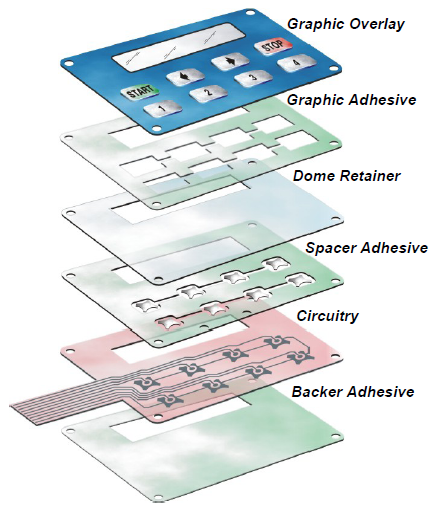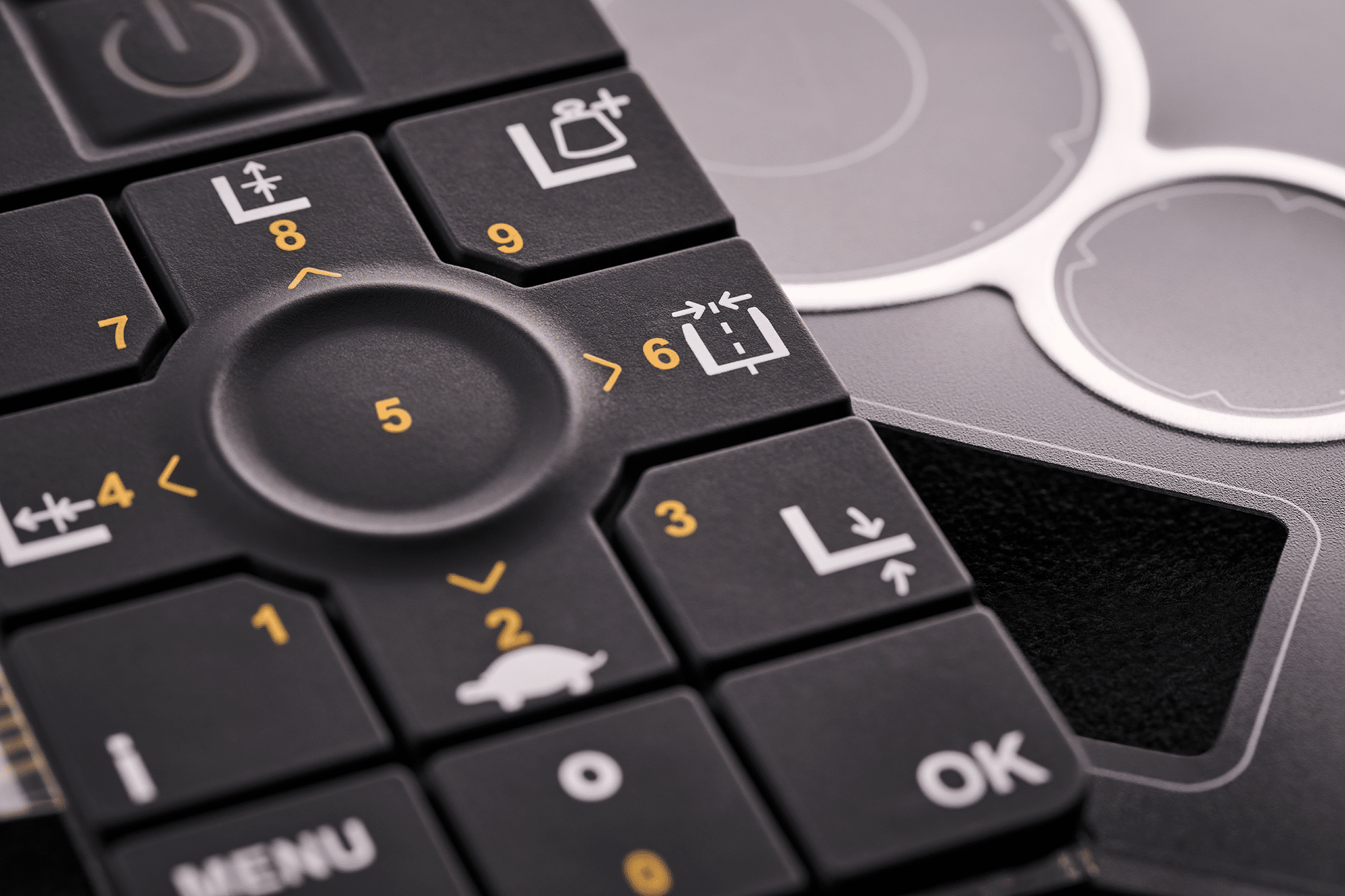Comprehending the Importance of Membrane Switch in Modern Electronics
Membrane buttons are indispensable elements in modern electronic tools. They offer a mix of performance and design that boosts customer interaction. Their light-weight and durable nature makes them appropriate for various applications. As markets evolve, the demand for customization and progressed attributes grows. Recognizing exactly how membrane layer switches over contribute to advancement exposes their value in forming the future of electronic devices. What exists in advance for this modern technology?
The Essentials of Membrane Layer Switch Technology
Typically overlooked, membrane layer switch innovation plays an important duty in the modern electronics landscape. These gadgets, made up of numerous layers, serve as user interfaces for numerous electronic items, ranging from household devices to medical devices. A typical membrane switch includes a graphic overlay, a spacer layer, and a circuit layer, which are diligently constructed to produce a useful interface.When stress is put on the overlay, the circuit layer is completed, enabling signals to be transmitted to the tool. This technology is known for its flexibility, making it possible for customization in shape, layout, and capability to fulfill specific user requirements. Furthermore, membrane layer buttons are slim and light-weight, making them ideal for applications where room is a costs. Their sturdiness and resistance to ecological elements additionally boost their allure, guaranteeing they can hold up against harsh problems while keeping capability. Overall, membrane switch technology is integral to creating user-friendly and reliable digital tools

Key Benefits of Membrane Layer Changes
Membrane layer switches deal a number of essential benefits that make them a favored choice in numerous electronic applications. Their design enables a compact kind factor, allowing makers to develop sleek and light-weight gadgets. In addition, membrane buttons are resistant to dirt, wetness, and chemicals, which enhances their durability and long life popular environments. The responsive feedback given by these switches can boost individual experience, making them instinctive and simple to operate.Furthermore, membrane layer switches can be tailored with diverse graphics and shades, allowing for special branding opportunities. The manufacturing procedure is typically cost-efficient, especially for high-volume manufacturing, as it lowers assembly time and streamlines layout. Finally, membrane layer changes require marginal maintenance, contributing to reduced total operational expenses. These benefits underscore their expanding popularity in modern-day electronics, where reliability and easy to use user interfaces are important.

Applications Across Numerous Industries
The convenience of membrane changes enables their widespread adoption across various sectors. In the medical area, they are typically used in analysis devices and person tracking systems, supplying a resilient interface immune to contaminants. The auto market makes use of membrane switches for control panel controls, enhancing user experience with smooth styles that hold up against rough conditions. In consumer electronic devices, they work as control panels for tools such as microwaves and coffee manufacturers, providing an easy to use interface that is easy to clean. The aerospace market utilizes membrane layer switches in cabin controls, where integrity and space effectiveness are vital. Additionally, the industrial sector leverages these buttons in machinery and control systems to assure robust procedure in requiring atmospheres. This broad series of applications emphasizes the flexibility of membrane layer switches, making them essential parts in enhancing functionality and user communication across diverse technological landscapes.
Customization and Design Flexibility

Future Trends in Membrane Layer Change Development
Emerging patterns in membrane layer button development show a growing focus on improved functionality and combination with clever modern technologies. click site As consumer need for more advanced electronic gadgets rises, makers are concentrating on producing membrane layer changes that not only serve basic operational duties however also incorporate functions like touch level of sensitivity, backlighting, and haptic feedback.Furthermore, developments in products are anticipated to improve toughness and ecological resistance, making membrane layer switches over suitable for varied applications in industries such as medical care, automobile, and consumer electronics. The integration of capacitive touch innovation is likely to come to be much more widespread, enabling sleeker designs and enhanced user interfaces. membrane switch.Additionally, the rise of the Net of Things (IoT) is triggering the growth of membrane changes that can interact wirelessly with other devices, enhancing interconnectivity. On the whole, the future of membrane layer button modern technology appears encouraging, driven by innovation and the search of user-friendly options
Regularly Asked Questions
Exactly How Do Membrane Switches Compare to Traditional Mechanical Buttons?
Membrane buttons, being much more space-efficient and supplying a smooth design, contrast with typical mechanical switches that give responsive responses. The previous typically feature personalized graphics, while the latter commonly ensure longevity and integrity in numerous applications.
What Materials Are Frequently Made Use Of in Membrane Change Manufacturing?
Membrane layer switches are usually generated making use of materials such as polyester, polycarbonate, and printed conductive inks. These materials supply versatility, toughness, and responsiveness, making them ideal for various applications in electronic devices and interface.
Can Membrane Switches Be Fixed or Recycled?
Membrane layer buttons can commonly be fixed, particularly if minor concerns develop, such as sticky failing or surface damage. Nonetheless, full reuse is commonly limited due to put on and possible deterioration of materials with time.
How Do Ecological Aspects Influence Membrane Layer Switch Efficiency?
Environmental factors, such as temperature, exposure, and humidity to chemicals, substantially influence membrane layer switch efficiency. Extreme problems can bring about deterioration, affecting responsiveness and durability, inevitably jeopardizing the capability of the gadget in various applications.
What Is the Regular Life Expectancy of a Membrane Switch over?
The typical life-span of a membrane button generally ranges from 1 to 5 million actuations, relying on elements such as use frequency, environmental problems, and the materials utilized in production, impacting durability and performance long life. A my website regular membrane layer button is composed of a visuals overlay, a spacer layer, and a circuit layer, which are meticulously set up to develop a functional interface - membrane this post switch.When pressure is used to the overlay, the circuit layer is completed, enabling signals to be transferred to the tool. The responsive responses provided by these switches can improve individual experience, making them very easy and intuitive to operate.Furthermore, membrane switches can be customized with diverse graphics and colors, allowing for distinct branding opportunities. As consumer demand for much more advanced electronic gadgets boosts, producers are focusing on producing membrane switches that not only serve standard functional functions however likewise integrate functions like touch sensitivity, backlighting, and haptic feedback.Furthermore, improvements in products are expected to improve sturdiness and environmental resistance, making membrane switches ideal for varied applications in markets such as health care, automobile, and consumer electronics. The assimilation of capacitive touch modern technology is most likely to end up being much more prevalent, permitting for sleeker layouts and enhanced user interfaces.Additionally, the rise of the Net of Points (IoT) is motivating the advancement of membrane switches over that can communicate wirelessly with other devices, improving interconnectivity. Membrane buttons, being more space-efficient and using a streamlined design, contrast with conventional mechanical switches that give tactile feedback